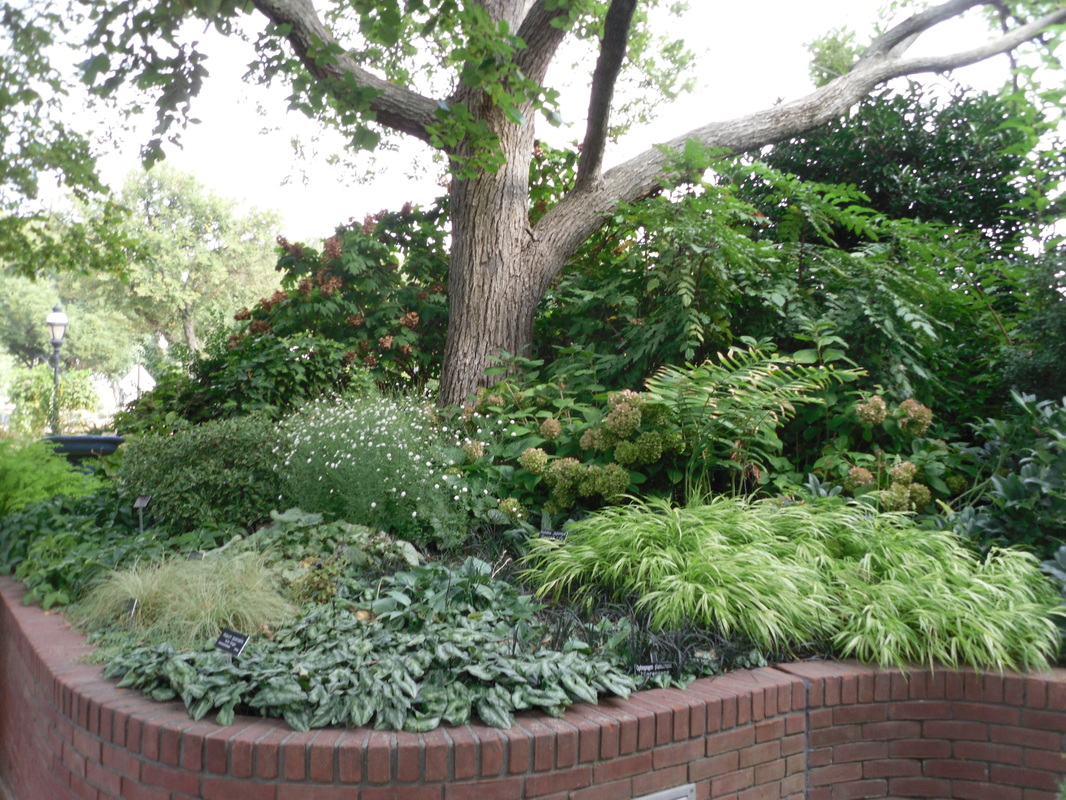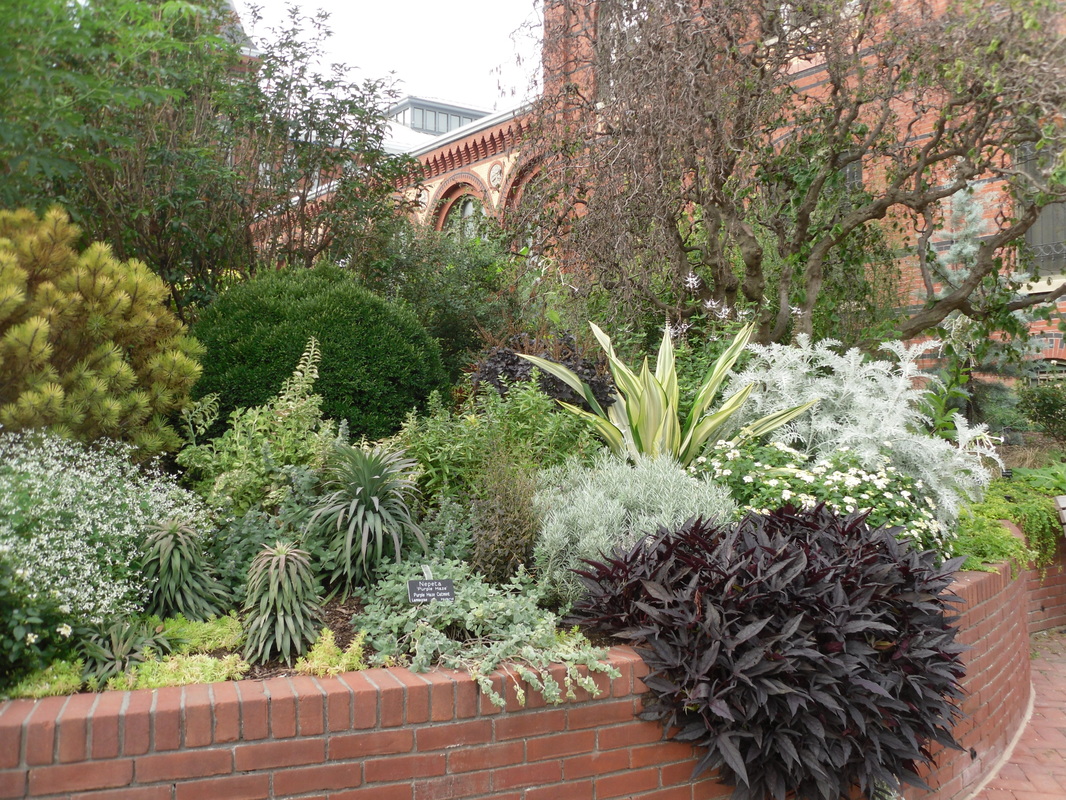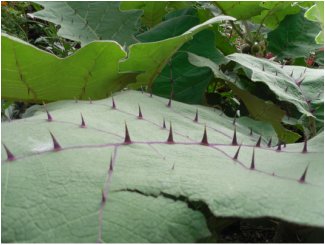|
Dawn Szelc LDG Secretary I wanted to give a special "shout out" to our Hospitality Chair, Julie Hawley. She deftly, behind the scenes, provides all the refreshments for each meeting of the Landscapes Designers Group. She does a wonderful job of providing some lovely refreshments and making everyone feel welcome. At the most recent meeting, she arrived to set everything up and stayed through the introductory remarks, then cleaned up and had to get back home to continue her homework as she is still a GWU Landscape Design student at this time. Thank you Julie for your dedication!
1 Comment
Dawn Szelc LDG Secretary On October 20, 2015 the LDG and a number of guests were treated to an evening tour of residential designs which highlighted the landscape lighting of Olson Weaver Lighting Design & Install. The first house was the Everett residence in Chevy Chase, owned by the landscape designer Kathryn Everett. Kathryn had taken a backyard composed of just lawn and converted it into a cozy set of garden rooms with a European feel. Within a set of adjoined circular shapes she used multiple hardscape materials that included brick, bluestone, loose rocks, and a koi pond and fountain. The space was also framed with Degroot’s Spire Arborvitae. The areas to the sides of the circles had framed beds with perennials and herbs. As the sun set, the lighting came alive with lights on the wall behind the fountain and encircling the pond. Karen Olson explained that pendant lights hung in the rose covered archways which lead from one garden room to another.  The second property that we visited was the Camper residence. Kathryn Everett created the landscape design for this property as well. The home is one of the oldest in Chevy Chase. The property included a sunken garden and fountain designed by Rose Greely, the first licensed female landscape architect in Washington. The lighting highlighted the facade of the house and the large cherry tree on the right side of the front yard. We walked around the side of the house through the backyard where there was a dry creek bed to catch the rain runoff, as well as capture points from the home’s downspouts that channeled rain water into the creek bed. We then walked to the sunken garden where the fountain, as well as small and large trees were highlighted by landscape lights. The next property was the Strachan residence, this time just over the border into Washington D.C. This was a smaller backyard project but with big impact. Lynn Church was the designer for this property and created a small patio and seating area with a beautiful urn that Olson Weaver had up-lighted from the hardscape patio. The evergreens along the side and back fence were also lit from below, creating rhythm and displaying the texture of the trees. Plants used in the design included Itea “Henry’s Garnett”, Mahonia, Viburnum dividii, and Taxus baccata “Repandens”. The fourth property was the Doyle residence owned by Brendan Doyle and well-known sculptor Larry Kirkland. Our tour began at the front of the house which was nicely planted with small trees and shrubs. Olson Weaver had installed brushed stainless steel “L” shaped path lights along the paths that leads from the front door to the rear yard. Along the way a narrow spotlight highlighted the St Francis of Assisi statue. The back patio was nicely situated next to their breakfast room, and Brendan described that he used the theory of the “Golden Triangle” to lay out the space. Along the fence there the crape myrtles were lit from below creating a lovely glow. Walking further into the yard revealed a dramatically lit stand of bamboo. A side discussion with Elizabeth from Yankee Clippers revealed that it is entirely possible to have bamboo without it invasively spreading. Continuous maintenance pruning can keep it under control. We were also invited into the house to view the art collected by the couple, and the amazing working studio where Larry explained his current work for the University of Iowa Children’s Hospital. The final stop on the tour was the Lanphier residence. This was a new home, 3 years old, and the owner explained that the previous house had exploded mysteriously. It was a very contemporary design that required an equally contemporary landscape designed by Brendan Doyle. Brendan described it as his tribute to Dan Kiley. There was a stone parquet walk around the front of the house which faced Rock Creek Park. The stones had been painstakingly laid atop individual concrete bases and smaller rock filled the spaces. Brendan had extensively researched plants that would be deer resistant since the deer could easily cross the street to the front yard from the park. Planted within the stone walk was white creeping mazus ground cover and white lobelia. White Natchez crape myrtle, White Vitex or Chaste tree, hellebores, and various grasses were also used along the path and included lighting features. Many of the large trees on the property were original including a beautiful Red Virginia cedar and a 200 year old Mulberry tree near the road. Thanks to all the designers, Kathryn Everett, Lynne Church, and Brendan Doyle, for being available at each property to discuss their work and also to LDG members Karen Olson and Tony Weaver for providing five wonderful examples of Olson Weaver lighting installations. http://www.olsonweaver.com
Dawn Szelc LDG Secretary Have you visited a small garden that took your breath away? This was the reaction for many when the LDG recently visited the Smithsonian’s Mary Livingston Ripley Garden. We met with Janet Draper who has worked as the horticulturist of the garden for 18 years. She talked about not acting as a designer, but her feel for plant placement and extensive knowledge of plants was evident everywhere. The area where the garden is located was planned as a parking lot, however Mary Ripley was influential in creating the garden as well as having a parking area that is mostly hidden to those in the garden. Mary was the wife of the then Secretary of the Smithsonian, Sydney Dillon Ripley, and was involved in the Smithsonian Institution’s Women’s Committee. The committee hired Hugh Newell Jacobsen to design the space, and though Jacobsen was known to be very modern in his design aesthetic, the garden is full of sweeping curves and cozy spaces.  The American Elms that had been planted all along the National Mall and in this space had to be retained first and foremost. The garden walls and beds were designed around these large specimens. Janet has two volunteers that help her and there are 17 total staff members who handle all the Smithsonian gardens. Many of the plants they put in each year are annuals and tropicals, so that there is wonderful color during the height of the tourist season. Some of these are moved back to the greenhouse in Suitland, MD, but many are just replanted each year. Janet chooses a color scheme and requests plants accordingly in the fall. They have a buyer who makes the purchases from various sources. For fertilizer she uses anything that is organic and for soil amendments she uses compost and pine fines whenever possible. In the fall she plants bulbs, pansies, and winter crops like kale, and cabbages. In the spring once the tulips are done blooming, she begins ripping them out and putting in the summer plants. During the summer most of the work involves maintenance of what is already growing. The fountain is turned off from November through March and she must find a way to make it look nice even when dry – sometimes trying out different seasonal decorations or blue glass to look like water. During the winter they are in charge of snow removal which mostly must be done by hand shoveling. The garden does have an irrigation system. It is scheduled to run at night for certain time periods, but since it was on when we were there, something appeared to be amiss. Janet mentioned that she needs to find a replacement woody for the Corylus avelana that was in the front garden because it was dying. She requested help from LDG members to suggest an alternative. She also has problems with the Arnold’s Promise Witch hazel that has a new fungus and was not thriving. Again LDG members might be able to provide some suggestions for her. We toured all the various beds, with Janet talking extensively about the many interesting plants in each one. Some highlights were Naranjillo or Solanun quitoense from Ecuador. It is a plant with many thorns everywhere, even on the leaves, and produces an orange fruit. She likes to use this plant as a teaching moment for showing unique plants to visitors. Purple leaf cotton was another interesting plant with white cotton bolls showing on the dark purple plant, as well as Tassel flower, unique begonias, and Spider lily. Janet showed the group the large flowers from the Dutchman’s pipe vine and explained the life cycle of the fly that enters the flower and helps to pollinate it. A big LDG thank you to Janet, whose extensive knowledge and experience in the garden made this tour a delightful experience. The view at the back side of the garden was as satisfying as the front of the garden!
|
AuthorsLDG is a non-profit corporation dedicated to the exchange and enhancement of knowledge relevant to the landscape design profession. We are a group of professional designers in the metropolitan Washington, DC area. Membership is meant for students studying and professionals employed in landscape design or associated professions (i.e. arborists, installers, contractors, etc.). Archives
October 2023
CategoriesPast Newsletters can be found in the Members Only Section of the LDG Membership Connection. You must sign in to view these files.
Past Newsletters |
|
Search for a Landscape Designer in Your Area:
|












 RSS Feed
RSS Feed
